Behind the Scenes Tour at NASA's Johnson Space Center, Part 2: Crew & Thermal Systems Division

The next stop after our Behind the Scenes Tour at NASA's Johnson Space Center, Part 1: Mission Control was to the Crew & Thermal Systems Division. This division is responsible for designing and testing technology for environmental control and life support systems. This includes spacesuits and tools for extravehicular activity, as well as less glamorous tools (as you will see below).
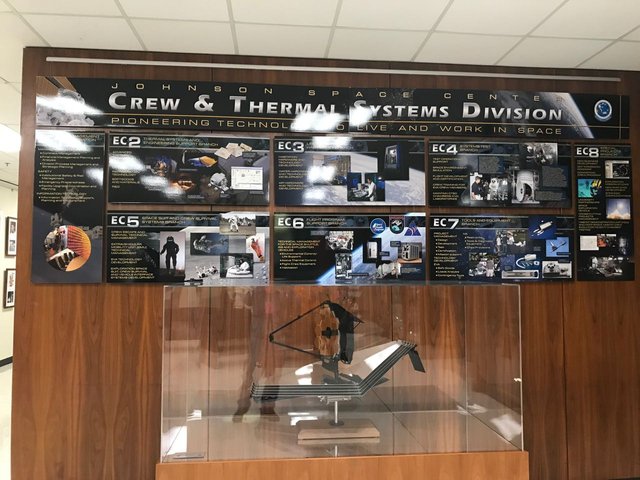
Testing Center
The Division's building is dominated by a large testing center. The photo below shows around half the length of the room. It was taken from the top of one of the test chambers.
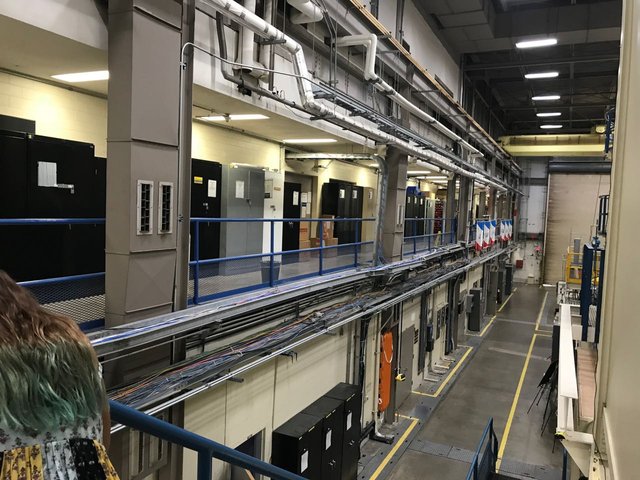
Here a view from the end of the room looking back, showing banners for the 6 Space Shuttles:
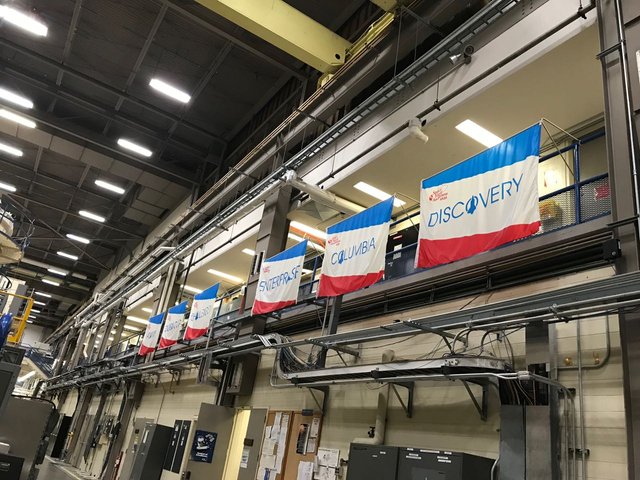
This is the Deep-Space Habitat Analog Vacuum Chamber Facility along with some posters describing its purpose:




We went above one of the test chambers where we saw some of the tools, including prototypes, that might be tested in the chambers.
This is a tool for scooping up rock samples, such as on the moon or Mars:
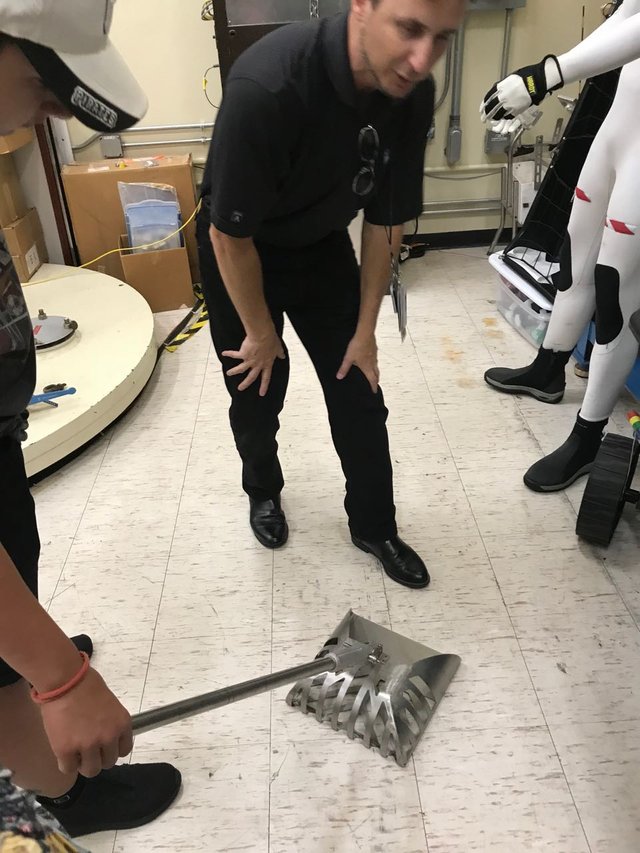
Below is an early prototype for scooping up samples into a plastic bag so that they can be sealed to prevent contamination. If you look closely you'll see that the bag part is actually part of a Diaper Genie! One of the cool things about the Crew & Thermal Systems Division is all the cool prototypes they work on. You'll see more later in this post.

A room opposite the test chambers is used as a control center during tests:
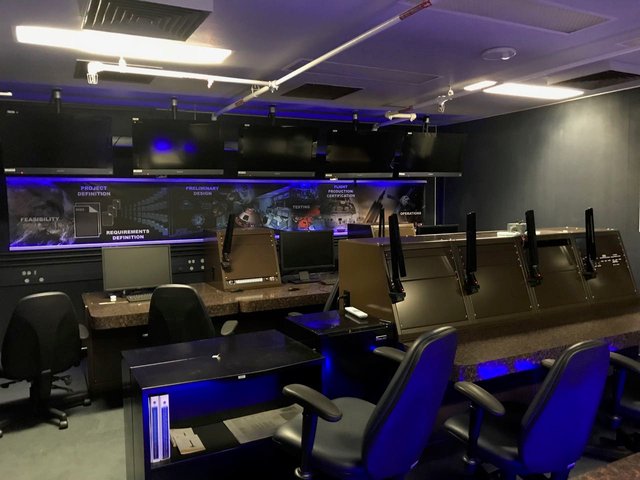
This test facility is at one end of the room. Note the US Spacesuit in this photo. The next photo shows the same suite along with a Russian spacesuit.

Here is a Russian Spacesuit with the US suit in the foreground:
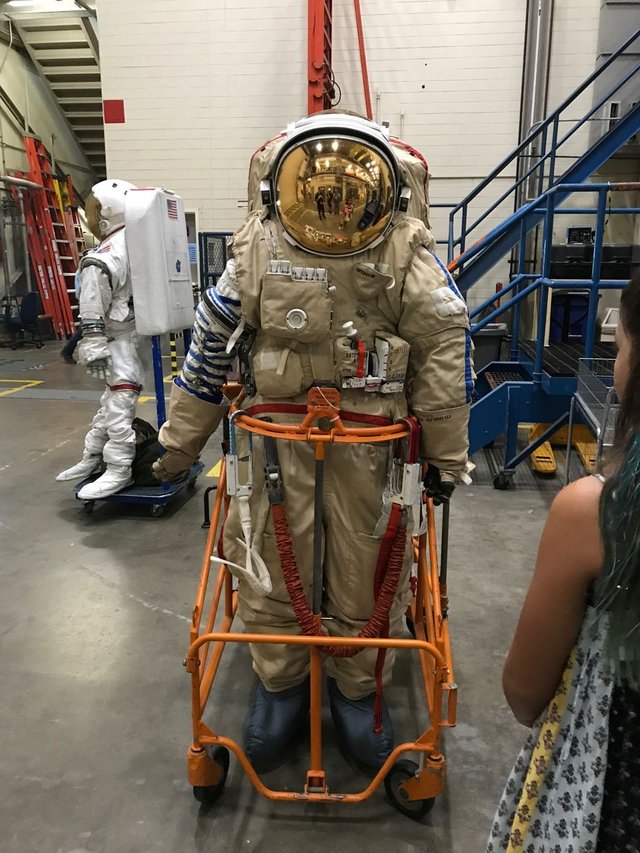
I couldn't resist using the Russian suit's visor to take a selfie:
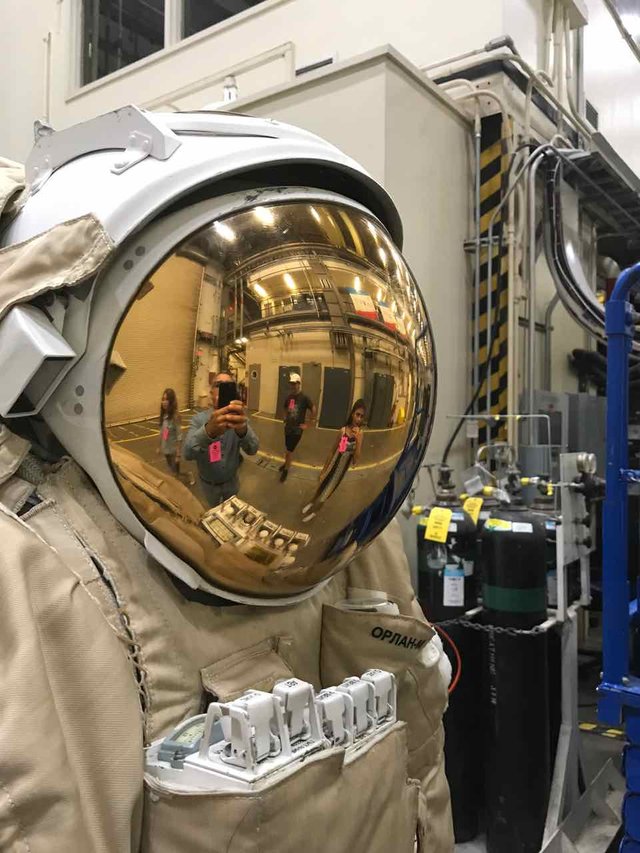
To see an artistic re-rendering of this photo that I created using a deep learning neural net, see the post NASA Spacesuit Photo Styled After Rain Princess.
Tools and Tool Prototypes
In addition to the scoopers shown above, we saw a number of other tools and prototypes of tools. This poster gives an example of several extravehicular activity tools that the Division developed:
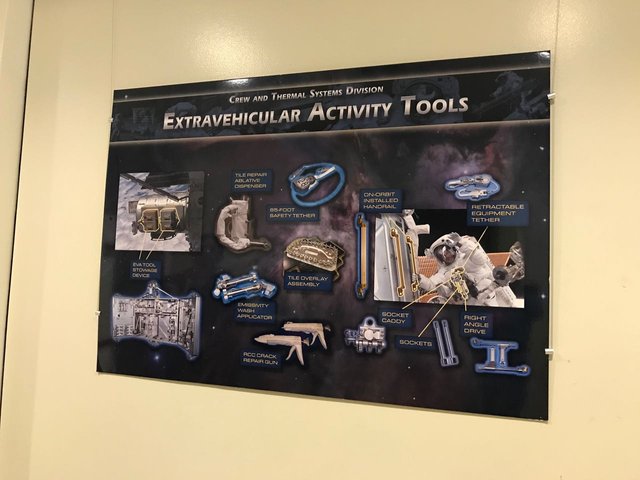
Notice the handrails in the photo above. Here is another design that allows an astronaut to lock the handhold anywhere along the track:


This was the crowd favorite prototype tool. Can you guess what it is?

How about now?

Good guess! It is indeed a fecal canister compactor. Fecal matter is brought back to earth, not ejected into space. To do so it must be compacted. This is a 3d printed prototype of one compactor. Remember how The Martian was able to grow crops on Mars?

Look at the bottom of the next photo and you'll see a specially designed machete. The Gemini and Apollo astronauts carried these in case they landed off course in jungle areas.

The machete is inside a large case of prototypes and scale models, many of them quite old:

Here is a prototype for a cordless drill. Black and Decker developed the first cordless power tools in 1961, but soon after was asked to develop a zero-impact wrench that could spin bolts in zero-gravity without spinning the astronaut using it. 1
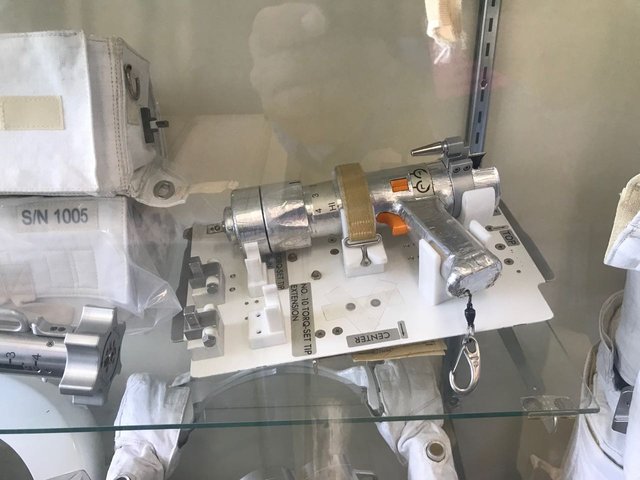
Life Support Systems
We saw the Apollo Command Module environmental control unit and a portable Apollo life support system. The portable system is quite large, but remember this would be used in zero or low G conditions.
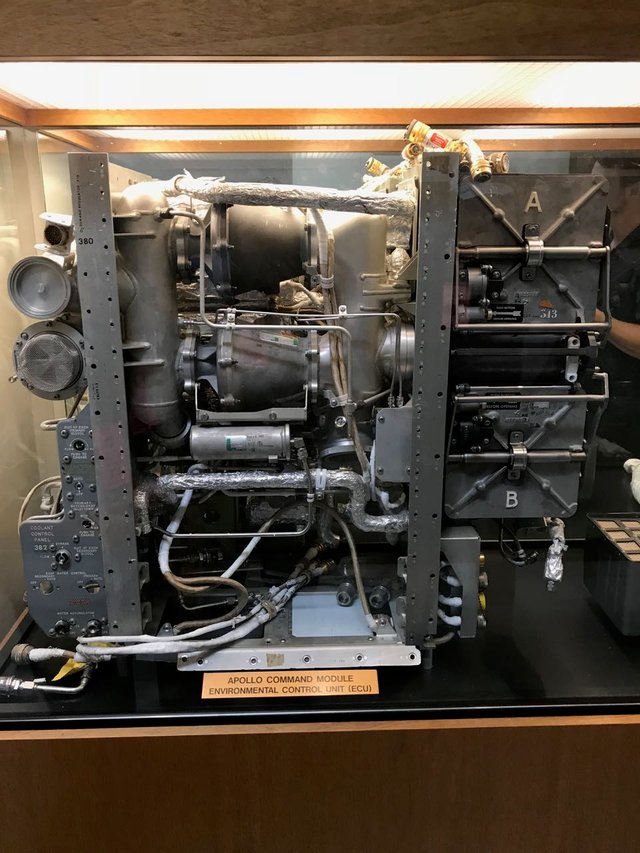

In the photo above you can also see the LiOH Canister that was part of the environmental control system used to scrub CO2 levels in the Apollo Command Module. This is the canister that had to be adapted so that the Apollo 13 astronauts could make it back to Earth after the oxygen tank explosion. You can read more about in Building an Apollo 13 LiOH Canister Adapter.
Conclusion
This concludes Part 2 of our tour. What impressed me the most about this Division was the immense amount of history in the building and all of the ingenuity demonstrated by the designs.
In the next part of this series, I will cover the space suits (early to present) on display in the Crew & Thermal Systems Division.
If you missed Part 1, you can find it here:
Behind the Scenes Tour at NASA's Johnson Space Center, Part 1: Mission Control
In the mean time, spread the love and importance of science, technology, engineering and math (STEM) to as many people as possible. Despite our technological advances, the human race and our planet faces a number of major challenges. STEM gives us the only real tools for addressing these challenges. What NASA's early accomplishments show us is that if we really set our mind to solving specific problems, we can do so, even in the face of great difficulties.
Proud member of #steemitbloggers @steemitbloggers

Wow, this is amazing! I noticed how most of the tools are white, do you know why that is? I guess it for easy visibility...
I'm told that the the white color is actually due to a coating that is designed to reflect the sun's rays so that the tools do not get hot, while also avoiding deterioration due to atomic oxygen in low earth orbit.
Ah that makes sense! No air means reduced modes for cooling!
I believe that the coating is called AZ-93 and is made by AZ Technology. You can read about in AZ-93 White Thermal Control, Electrically Conductive Paint / Coating. According to that page, the paint only allows 13-17% of the solar radiation hitting it to be absorbed. It also emits 89-93% of the internal heat generated by whatever it is painted on. it also degrades very little over time. In one example, after 5.8 years in orbit the material's performance showed very little degradation.
Materials like this are one of the reasons space travel is so cool and so important for encouraging innovation for more terrestrial applications.
No argument from me there! Space and the technology that we need to develop to survive there is one of the most interesting things around! The spin offs that we get and the knowledge that we acquire can be applied into the most unusual and unexpected situations!
I'm not sure. I'll have to ask my neighbor the next time I see him. Thanks for stopping by.
Part 3 of this series is now available: Behind the Scenes Tour at NASA's Johnson Space Center, Part 3: Spacesuits
Looks friking amazing and a lot of interesting and scientific stuff to learn...
Sure wish I could have joined you guys, but the limit of 4 visitors it was best to send the children with their daddy.
What a fascinating place to visit!! Boy and man heaven for sure! 😁
Oh yeah. @judethedude would love it.
lol no doubt!!! :)
Congratulations! This post has been upvoted from the communal account, @minnowsupport, by toddrjohnson from the Minnow Support Project. It's a witness project run by aggroed, ausbitbank, teamsteem, theprophet0, someguy123, neoxian, followbtcnews, and netuoso. The goal is to help Steemit grow by supporting Minnows. Please find us at the Peace, Abundance, and Liberty Network (PALnet) Discord Channel. It's a completely public and open space to all members of the Steemit community who voluntarily choose to be there.
If you would like to delegate to the Minnow Support Project you can do so by clicking on the following links: 50SP, 100SP, 250SP, 500SP, 1000SP, 5000SP.
Be sure to leave at least 50SP undelegated on your account.